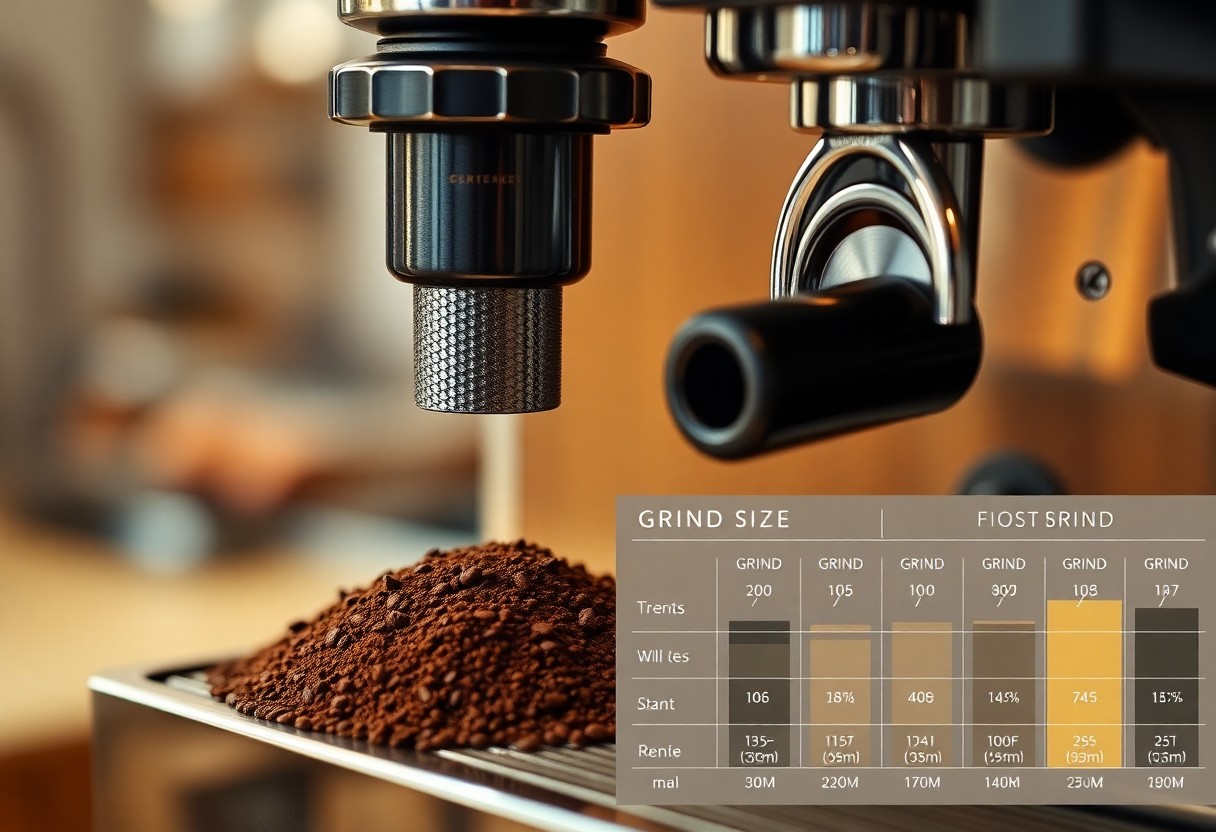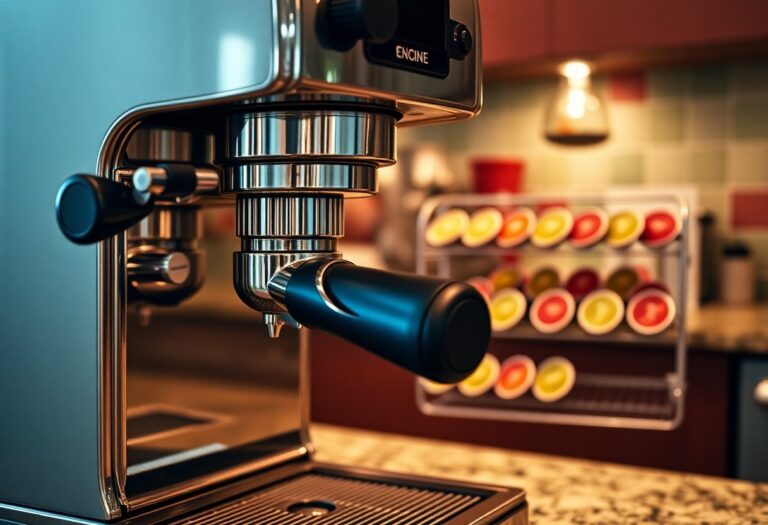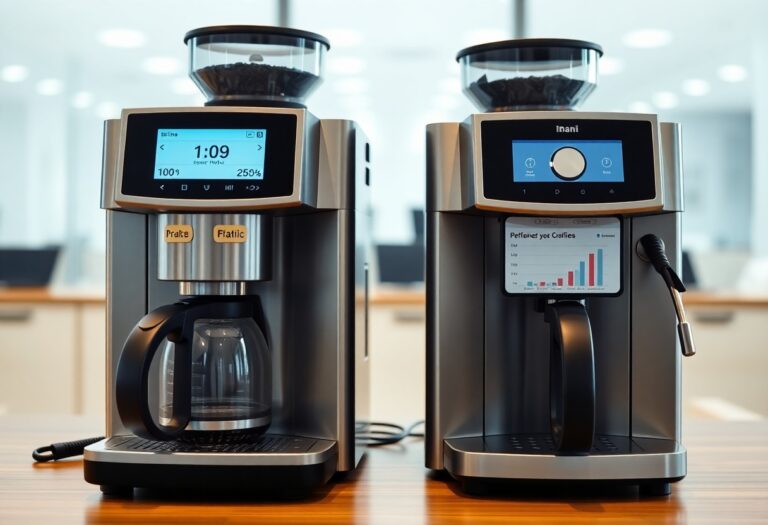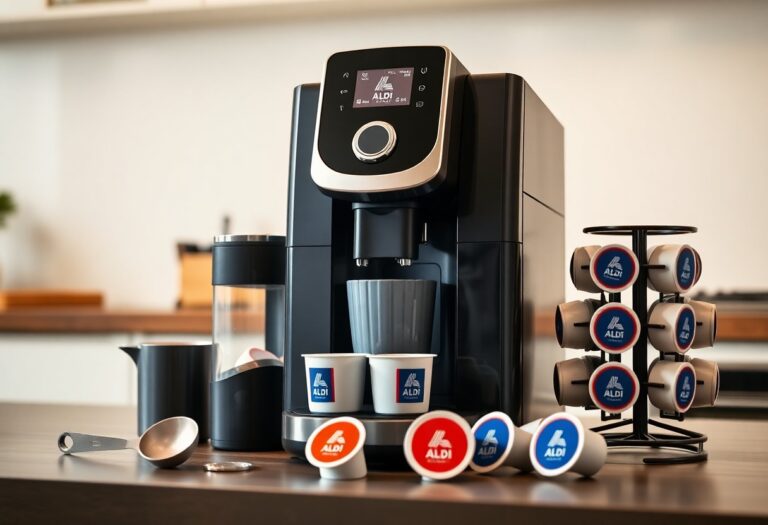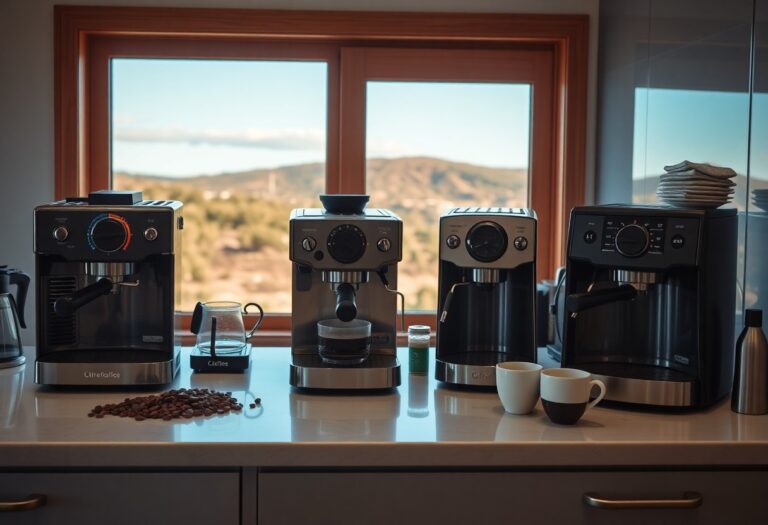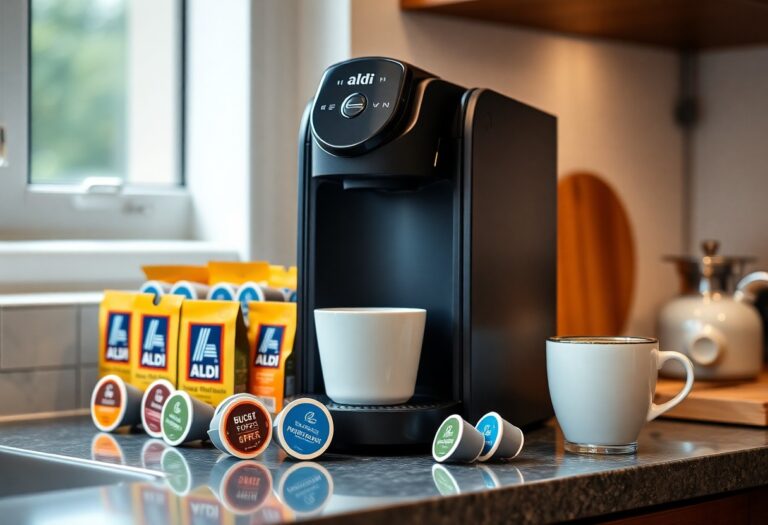What Coffee Grind for Espresso Machine – Grinding Specifications
Many coffee enthusiasts find that the grind size of your coffee can make or break your espresso experience. To achieve the perfect shot, you need a grind that is fine and consistent, allowing for optimal extraction of flavors under high pressure. In this post, we’ll explore the grinding specifications you require to master espresso making, ensuring that each brew delivers a rich and robust taste that you can truly enjoy. Let’s investigate into the details that will elevate your espresso game.
Key Takeaways:
- The ideal grind size for espresso is typically fine, resembling table salt, to ensure optimal extraction during brewing.
- Different espresso machines may require slight adjustments in grind size; fine-tuning may be necessary based on equipment and personal taste.
- Using freshly ground coffee beans can enhance the flavor and aroma of the espresso, as coffee begins to lose its freshness soon after grinding.
- Consistency in grind size is important; utilizing a burr grinder is recommended for achieving uniform grounds compared to blade grinders.
- Testing and experimenting with various grind sizes can help achieve the desired balance of flavor, strength, and crema in your espresso shots.
The Critical Role of Grind Size in Espresso Quality
Grind size profoundly influences the quality of your espresso. A fine grind allows for a greater surface area, thereby enhancing the extraction process. Too coarse a grind can lead to under-extraction, while excessively fine grinds can result in over-extraction. Each of these scenarios negatively impacts your espresso experience, affecting richness, body, and overall flavor profile. Understanding the relationship between grind size and extraction is vital for achieving that perfect cup.
How Grind Size Affects Extraction
Extraction efficacy is directly linked to grind size. When coffee particles are ground fine, the water interacts more thoroughly with the coffee, promoting a fuller extraction of oils and flavors. Conversely, larger particles may slow down the extraction process, leading to a lighter, less flavorful espresso. Finding the right balance in grind size enables you to control the extraction, enhancing your espresso’s quality.
The Impact on Flavor and Aroma
The grind size you choose can dramatically influence the flavor and aroma of your espresso. A finely ground coffee allows for optimal oil extraction, which significantly enhances the fragrance and taste. If your grind is too coarse, crucial oils remain locked in the coffee grounds, leading to a flat or underwhelming espresso. Adjusting your grind size to the perfect fine consistency can unlock vibrant notes and tantalizing aromas, providing a richer sensory experience with every sip.
Optimal Grind Sizes for Espresso Machines
The fine grind size, roughly akin to table salt, ensures that the water extracts the rich flavors during the brief extraction time typical for espresso. This precise grind allows for optimal pressure and creates that signature crema. You may find that aiming for a particle size ranging between 200 and 400 microns strikes the perfect balance, providing both flavor extraction and optimal brewing time.
Fine vs. Coarse: Finding the Sweet Spot
Dialing in the right grind size can significantly affect your espresso’s taste. A grind that’s too fine may clog your machine and lead to over-extraction, yielding a bitter flavor, while a coarser grind can under-extract, resulting in sour notes. Your goal is to find the sweet spot where the espresso pulls in 25 to 30 seconds, producing that perfect balance of richness and acidity.
Grind Size Variations Based on Bean Type
The type of coffee bean you’re using can influence the ideal grind size. Arabica beans, known for their complex flavors, might benefit from a slightly coarser grind compared to Robusta beans that demand a finer grind to amplify their bold characteristics. Each bean type has unique properties that affect how your espresso turns out.
For instance, Arabica beans tend to have softer, sweeter flavors, which can be highlighted with a grind that sits on the finer end of the spectrum, ensuring thorough extraction without bitterness. Conversely, Robusta beans, which possess a higher oil content and robust flavor profile, benefit from a consistently fine grind that enhances their natural strength and crema saturation. Adjusting the grind size according to your bean choice can lead to a noticeably improved espresso quality, allowing the unique notes and aromas to shine through. Experimenting with different beans and their respective grind sizes will let you discover the many layers of flavor in your cup.
Tools of the Trade: Choosing the Right Grinder
Selecting the right grinder is fundamental for brewing the perfect espresso. A high-quality grinder allows you to achieve consistent grind size, ensuring flavorful extraction every time. Look into different options available on the market, from manual to electric grinders. For a deeper understanding of your choices, check out A Coffee Lover’s Guide on How to Grind Coffee Beans for Espresso.
Burr Grinders vs. Blade Grinders
Burr grinders are the preferred choice for espresso enthusiasts. They provide a uniform grind, allowing for consistent extraction and flavor. In contrast, blade grinders chop coffee beans unevenly, which can lead to an inconsistent grind size and unpredictable results. For the best espresso experience, invest in a burr grinder that offers various settings to customize your grind.
Features to Consider in an Espresso Grinder
When opting for an espresso grinder, consider factors like grind settings, speed, and dosing capabilities. A grinder with a wide range of grind settings ensures you can experiment and find your ideal fineness. Additionally, look for features such as stepless adjustment for precise control and a dosage timer to enhance your consistency. Espresso grinders with lower RPM can also minimize heat transfer, preserving flavor during the grinding process.
Prioritize a grinder made specifically for espresso, as these often feature enhanced stability and precision. An integrated dosing mechanism typically allows you to grind just the right amount for your portafilter, reducing waste. A quality burr grinder could also have anti-static technology to prevent coffee grounds from clumping, which is critical for an even extraction. Investing in a dependable grinder tailored for espresso ensures you extract the full potential of your coffee beans while enjoying a rich, flavorful shot every time.

Adjusting Grind for Brew Consistency
Achieving brew consistency often requires you to adjust your grind size based on various factors. Minor tweaks to your grind can significantly impact extraction time and flavor profile. For instance, a slightly finer grind can increase extraction speed, while a coarser grind slows it down. Regular calibration based on your espresso machine’s characteristics ensures that each cup delivers the rich taste you’re after.
How to Fine-Tune Grind Adjustments
Fine-tuning your grind adjustments involves experimenting with small increments, typically between 0.1 to 0.5 mm, until you find the sweet spot. Start by observing the espresso shot time and tasting the results. If your shots are running too quickly, go slightly finer, while a slow extraction may need a coarser adjustment. Taking notes during each trial can help you recreate successful brews.
Environmental Factors Influencing Grind Performance
Altitudes, humidity, and temperature greatly affect grind performance in espresso preparation. For example, higher humidity can cause coffee grounds to clump, resulting in inconsistent extraction. Likewise, ambient temperature can impact the grind consistency, with warmer weather causing more static and leading to uneven doses. Regularly assessing these factors allows for proper adjustments to ensure you’re maximizing the flavor in every shot.
- Altitude: Changes with elevation affect extraction times.
- Humidity: Increases moisture in coffee, making it clump.
- Temperature: Affects static and dose consistency.
- Adjustment Frequency: Implement frequent checks based on environment.
- Brewing Environment: Consistently assess setup for best results.
- Flavor Extraction: Any slight variance can impact your brew quality.
Any adjustments you make should be consistent every time you brew, taking into account how these environmental factors change. Keep in mind that different beans might react variably based on their roast profile and origin, so craftsmanship and observation remain key. Some additional elements to consider include:
- Equipment Maintenance: Ensure grinders and machines are clean.
- Grind Storage: Properly storing grounds prevents staleness.
- Batch Size: Larger batches might need grind tweaks for uniformity.
- Testing Methods: Engage in various brewing methods for perspective.
- Personal Taste: Trust your palate as a final judge.
- Consistency Rules: Any variation may change flavor profiles considerably.
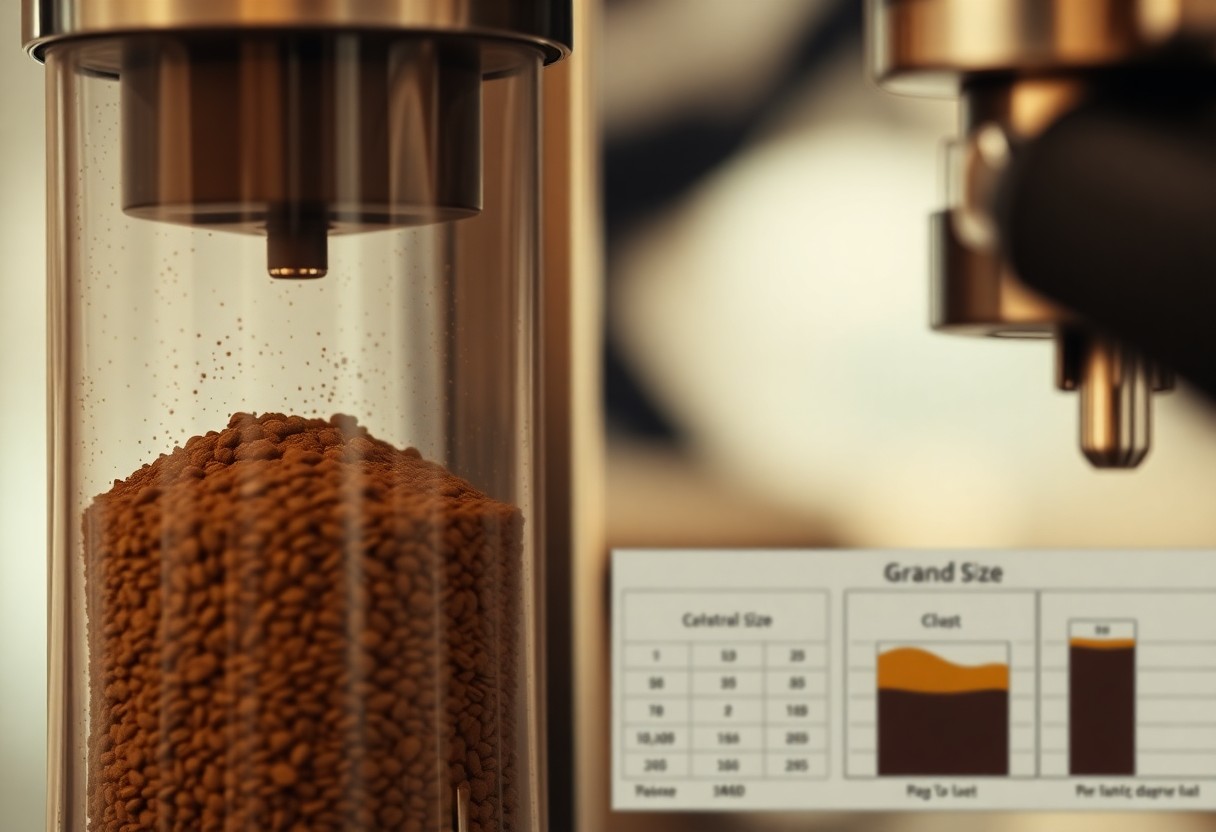
Demystifying Common Espresso Grinding Myths
Many misconceptions cloud the world of espresso grinding. You may have come across beliefs that suggest finer grinds are always better or that certain brands of grinder are the only option for excellence. How do you guys figure out the best grind size without relying solely on myths? The truth lies in experimentation and understanding your specific machine and beans.
Debunking Misconceptions About Grind Size
One common myth is that consistently finer grinds yield better espresso. In reality, the ideal grind size depends on various factors like the specific beans, water temperature, and pressure. Instead of adhering to arbitrary notions, focus on achieving optimal extraction times and flavors through your unique setup.
Expert Opinions on Best Practices
Experts emphasize the importance of dialing in your grind size based on the coffee’s particular characteristics and your espresso machine’s requirements. For instance, specialty coffee roasters often suggest a grind size experiment to gauge extraction time, achieving a 25-30 second brew for a balanced cup. Engaging with the coffee community can provide insights into best practices that elevate your espresso-making process.
Consistent experts agree that each espresso machine and coffee blend will require personalized adjustments to grind size. Baristas often recommend starting with a medium-fine grind and progressively adjusting based on your taste preferences. Tools like the refractometer can help measure extraction efficiency, shedding light on whether your grind is too fine or coarse. This iterative approach will not only refine your skills but also enhance your overall enjoyment of crafting the perfect shot.
Summing up
Summing up, choosing the right coffee grind for your espresso machine is necessary for achieving the perfect shot of espresso. You should aim for a fine grind, similar to table salt, to ensure proper extraction and rich flavors. Pay attention to your machine’s specifications and adjust your grind size according to the specific beans and your taste preferences. By finely tuning your grind, you can enhance the quality of your espresso, making each cup a delightful experience that suits your unique palate.
FAQ
Q: What grind size is best for espresso machines?
A: The ideal grind size for espresso machines is very fine, similar to table salt or powdered sugar. This fine consistency allows for a quick extraction during the brewing process, which is necessary to achieve the strong and rich flavors characteristic of espresso. If the grind is too coarse, the water will pass through too quickly, resulting in a weak espresso.
Q: How does grind size affect espresso extraction?
A: The grind size significantly influences the extraction process. Finer grinds provide more surface area for the water to interact with the coffee, allowing for quicker extraction of flavors and oils. If the grind is too coarse, the water flows too fast without extracting the desired flavors, leading to a sour taste. Conversely, if the grind is too fine, it can lead to over-extraction, making the espresso taste bitter.
Q: Can I use pre-ground coffee for my espresso machine?
A: While it is possible to use pre-ground coffee, it is not advisable. Pre-ground coffee may not be adjusted to the ideal fineness required for espresso, potentially resulting in inconsistent flavor and extraction. For the best results, investing in a burr grinder is recommended to grind beans just before brewing, ensuring freshness and the correct grind size for espresso.
Q: How do different beans affect the grind size for espresso?
A: Different coffee beans can have varying densities and oil contents, which may require adjustments to the grind size. Generally, lighter roast beans may require a finer grind to enhance flavor extraction, whereas darker roasts can be somewhat coarser without compromising the taste. It’s good to experiment to find the perfect grind size that complements the unique characteristics of the beans you are using.
Q: How can I tell if my espresso grind is too fine or too coarse?
A: If your espresso grind is too fine, you may notice a slow extraction time and a bitter taste, along with a thick layer of crema on top. In contrast, a grind that is too coarse will yield a quick extraction time, thin crema, and a sour or weak flavor in the resulting espresso shot. Adjusting your grind size based on these characteristics will help achieve the desired flavor profile.

